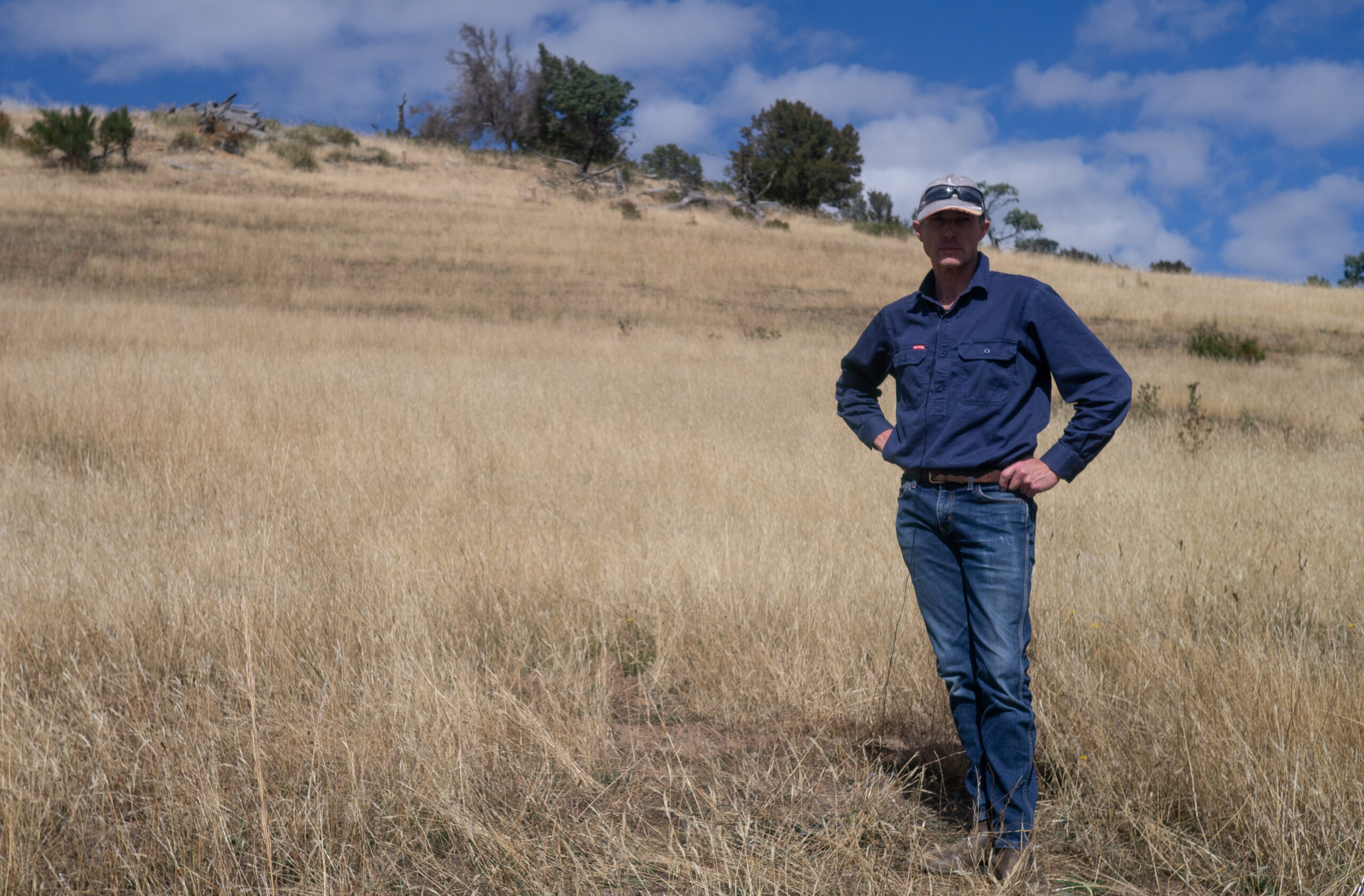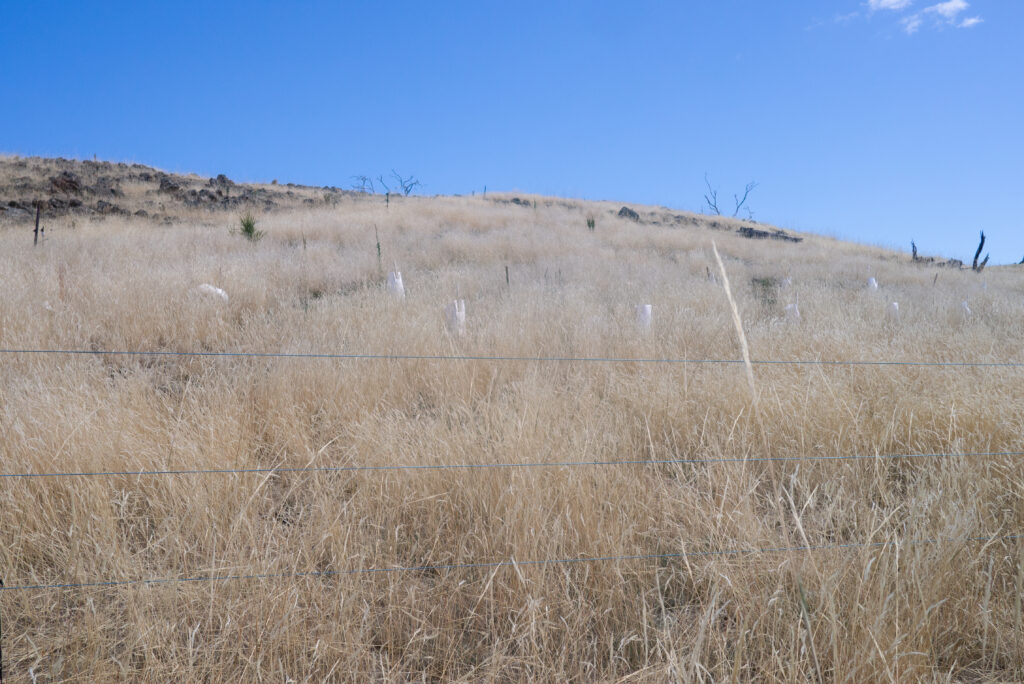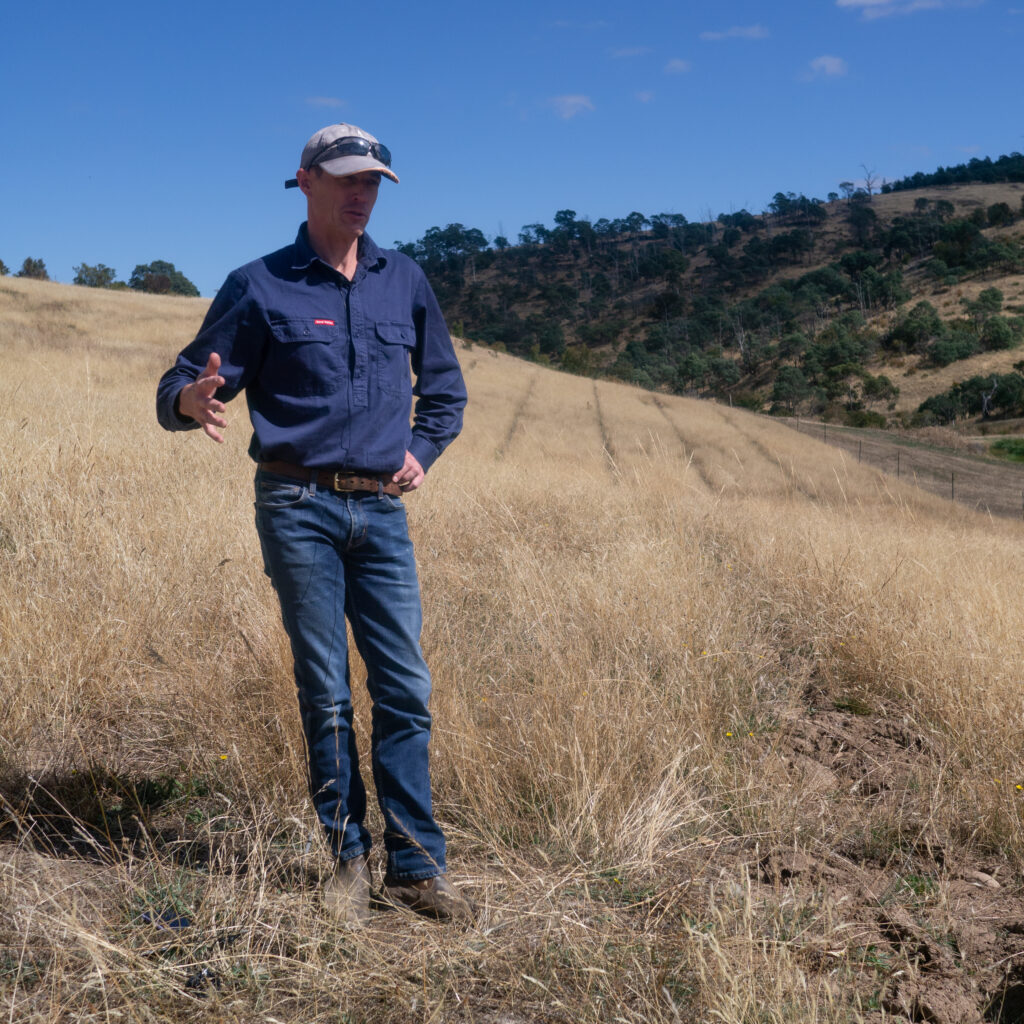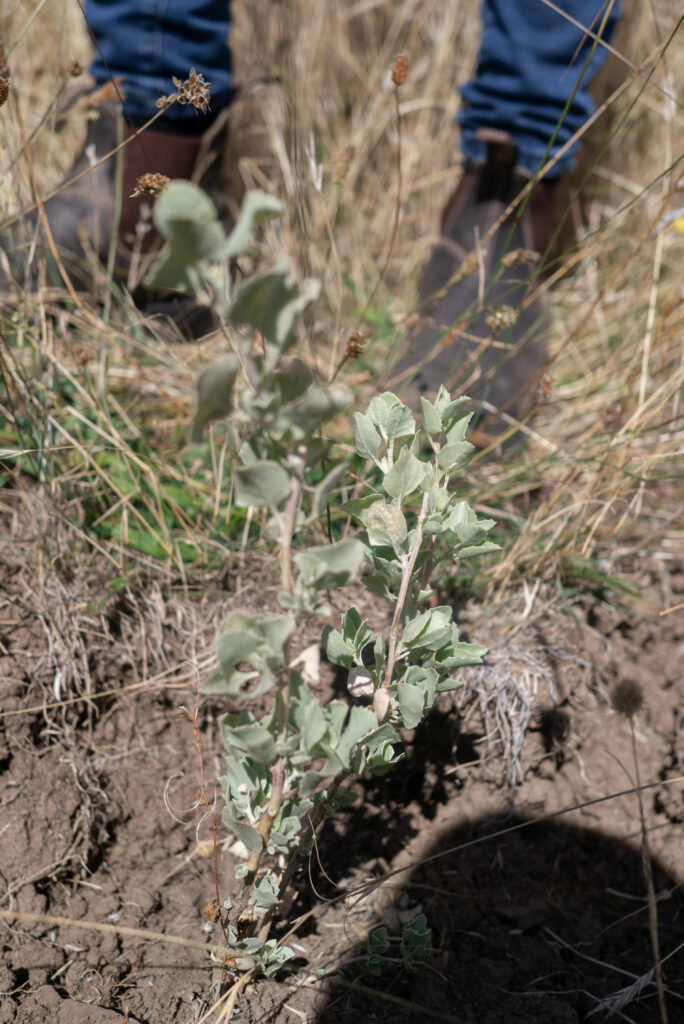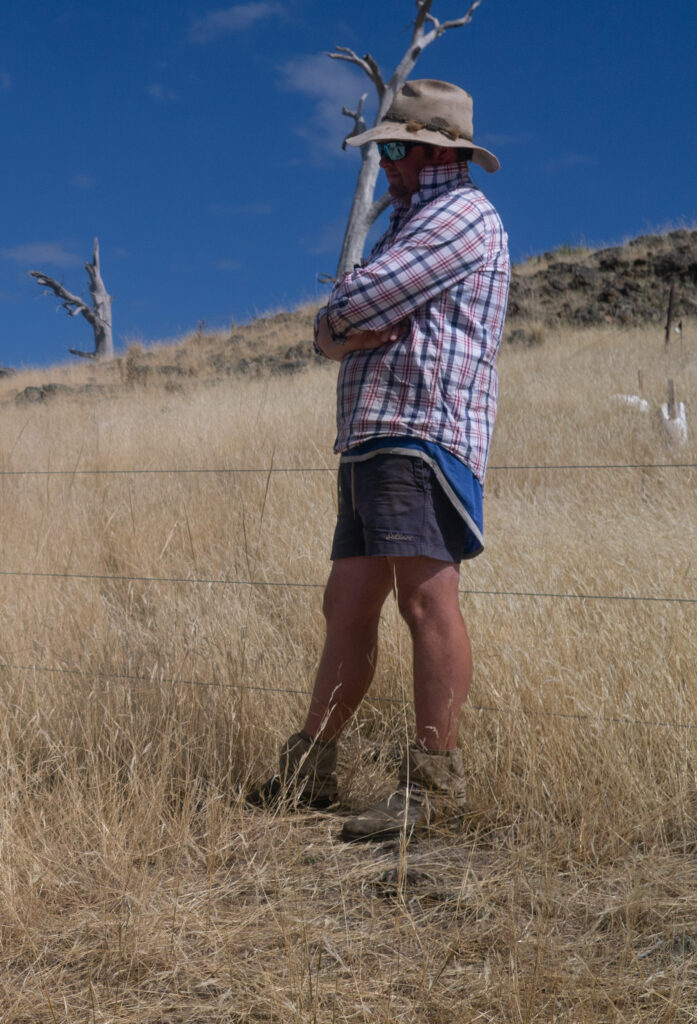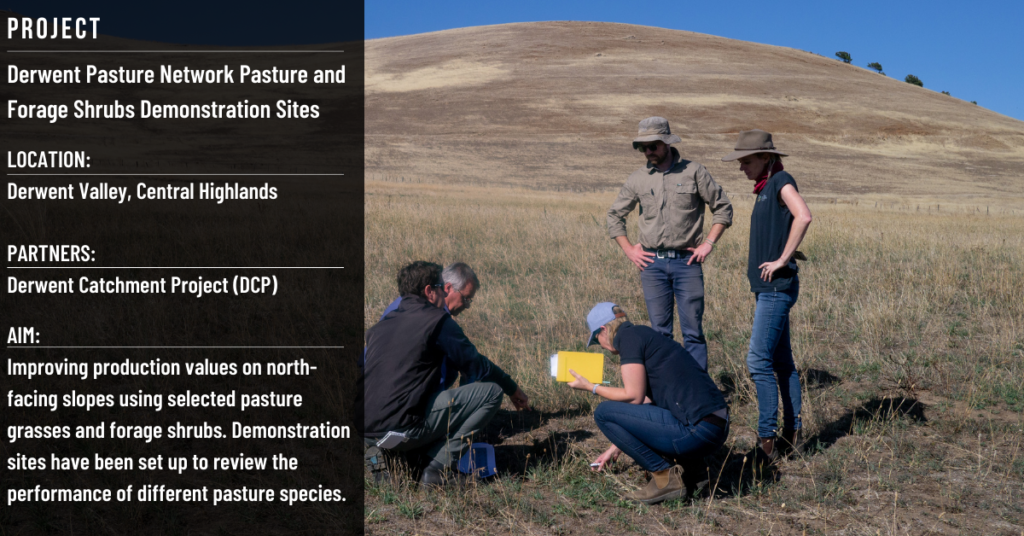
Parts of the Derwent Catchment are some of the driest in Tasmania, receiving an annual average rainfall of less than 500mm. In combination with a short growing season, highly variable soils and steep terrain, this brings unique production challenges. This is particularly relevant for dryland pastures, which are increasingly unreliable in times of drought.
Over the past year, the Derwent Pasture Network project (an NRM South – Derwent Catchment Project partnership funded through the Australian Government’s National Landcare Program) has set up a series of persistent perennial pasture and saltbush forage shrub demonstration sites in the Derwent Catchment. The project is testing how well selected persistent perennial pasture species and forage shrubs can cope in the region’s dry north-facing slopes, with the aim of bringing improvements both to the landscape and producers’ bottom line.
THE CHALLENGE OF NORTH-FACING SLOPES
North-facing slopes in the Derwent Catchment can be difficult to incorporate into grazing systems. Dry and exposed, with rough and steep topography and a harsh microclimate, establishing and maintaining improved pastures on these slopes is challenging.
Where livestock can access large areas of sloping ground, they will preferentially graze the warmer north-facing slopes and increase grazing pressure. Good fencing and water for livestock are needed to manage these areas and restrict stock access. However, the terrain often prevents farmers from being able to set up the necessary infrastructure.
Without careful management, north-facing slopes are also prone to erosion. Without enough vegetation to hold the topsoil together, soil will be blown away on hot windy days and can end up in waterways. Soil loss and declining water quality often means production losses for farmers and can cause significant environmental issues. Once established, the resulting poor land condition is very difficult to address.
The Derwent Pasture Network project is working with six commercial farmers in the Derwent Valley to demonstrate alternative practices on north-facing slopes. These demonstration sites aim to show that introducing more persistent and locally suited perennial pasture and forage shrub species into farming systems can have beneficial outcomes for production and sustainability and can help build resilience and profitability on farms.
One year into the project, the demonstration sites that were sown or planted last winter are slowly establishing, and participating farmers are excited by the potential of making better use of these challenging sites. Richard Hallett, a farmer whose property borders the Central Highlands and Derwent Valley, is keen to bring improvements to the north-facing slopes on his property. His involvement with the project has allowed one of his north-facing slopes to be planted with thousands of saltbush shrubs, which he hopes will successfully establish over the coming years.
It’s about conserving areas of the farm that are prone to degradation, improving the landscape and having the dual purpose of production and conservation outcomes over the long term. It’s a great project to be part of and it’s very important that these kinds of programs continue to be funded over the long term so that we can really measure the success of what we’ve been doing here.”
– Richard Hallett
Five hectares across Richard’s property have been planted out with three different species of saltbush. Trials in the south of Australia have shown that saltbushes (Australian native and European species) are a useful supplement food for sheep – filling important feed gaps when pasture feed is in short supply, reducing the cost of supplementary feeding and improving overall ground cover.
“We’re interested in testing a commercial scale approach to assess the cost and benefits of having saltbush in the landscape,” explained Eve Lazarus, NRM Co-ordinator with The Derwent Catchment Project. After leaving the shrubs to establish for another couple of years, they will be grazed. The DCP team will review the costs and benefits and see how much extra feed the saltbush provides. We’ll be able to advise other farmers in the region about the viability of using saltbush with information around costs.”
Motivated by an interest in generating more feed off a paddock than what could be achieved with native pasture alone, Derwent Valley wool and lamb producer James Hume also has a section of his property planted out with a range of forage shrubs.
The steep north and south facing slopes on his family’s Allanvale property have always presented unique challenges. In the 1980’s his father began looking into cell grazing – stepping away from the traditional set stocking approach to improve groundcover and reduce grazing pressure across the landscape. Continuing his family tradition of innovative landscape management, James believes the forage shrub trial will help to drought-proof his property.
James believes that any initiative that works to improve landscape condition and biodiversity values will bring other benefits to his business. “It adds another string to our bow from a marketing point of view, something we can add as part of our portfolio. It’s part of our tree planting, carbon sequestration initiative which is going to be an important part of being a leading wool grower and putting our product into any possible market. It’s helping us to become more carbon neutral producers and we’re going to be getting a carbon rating for our properties,” said James.
Saltbush shrubs (pictured above) have deep root systems, which helps them make better use of water and nutrients deeper in the soil profile, compared to shallower rooted pasture grasses. This makes them a viable alternative to pastures on north-facing slopes. They can also provide shelter and shade for stock and increase on-farm biodiversity.
“You’re growing a hardy shrub on a severe north-facing piece of land that’s going to help hold the soil together in dry years but also doubles up and provides a source of protein for animals to graze on. I’m really looking forward to finding out how effective the trial is in terms of meeting some production-based initiatives and also what it does to help maintain groundcover and provide shelter for native wildlife, which we need to co-exist with.”
– James Hume
Ultimately, both James and Richard are hoping that their north-facing slope saltbush sites will yield an overall improvement in groundcover and livestock performance which will help to improve soil health and increase farm productivity.
THE DERWENT PASTURE NETWORK
The demonstration sites will run until June 2023 and form part of the larger Derwent Pasture Network project to help Derwent Catchment farmers improve resilience in challenging agricultural landscapes.
The project is supporting an innovative dryland pasture course (the first of its kind in Tasmania), themed field days, peer-learning discussion group events, a farmer mentor program and the Derwent Pasture Network website – a dedicated dryland grazing information hub for Tasmanian dryland graziers.
This project is supported by NRM South through funding from the Australian Government’s National Landcare Program.
